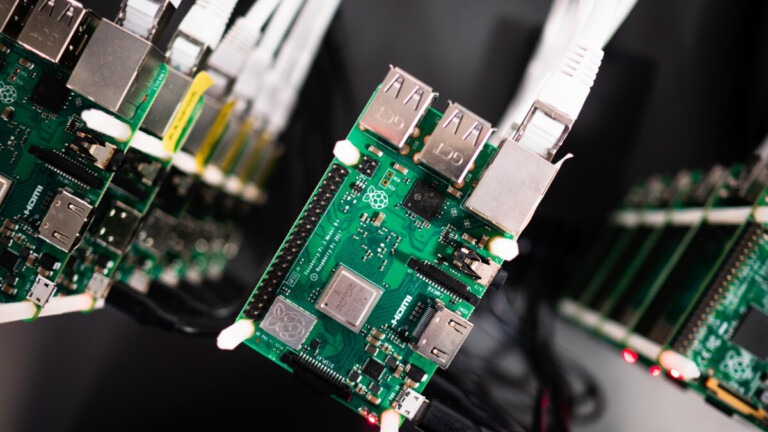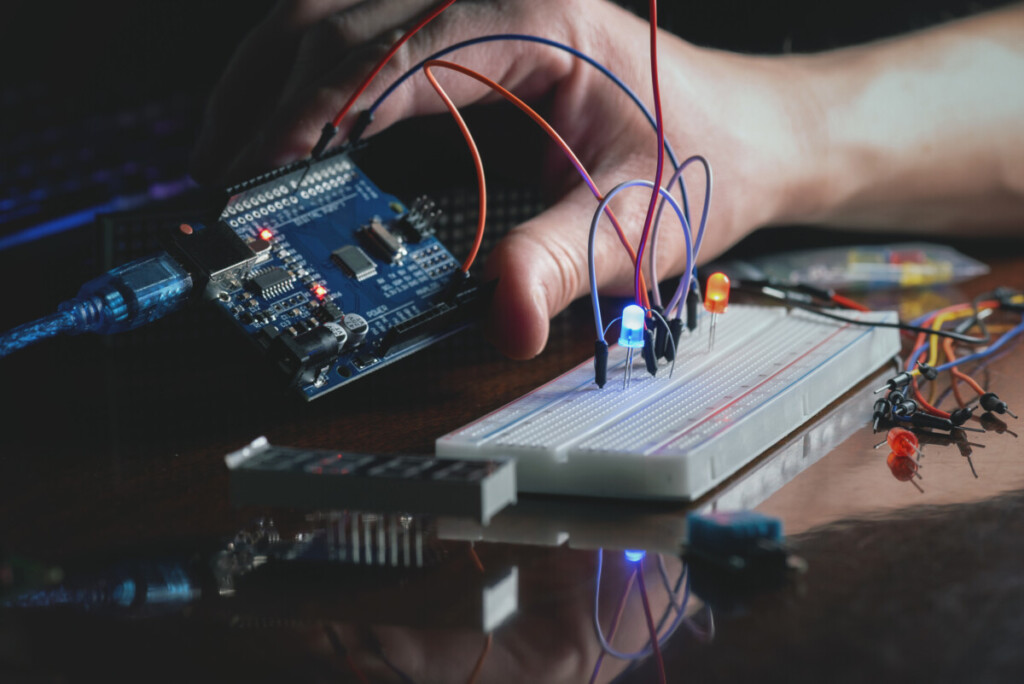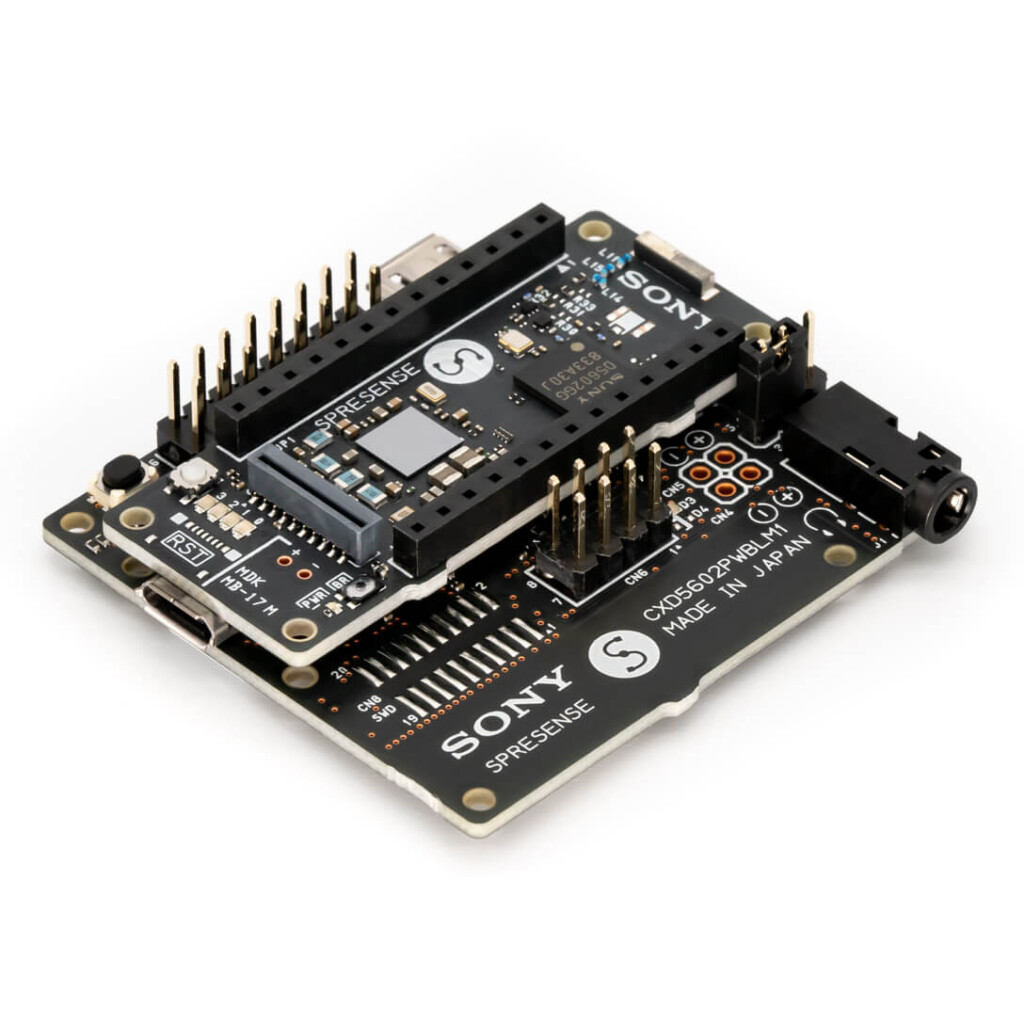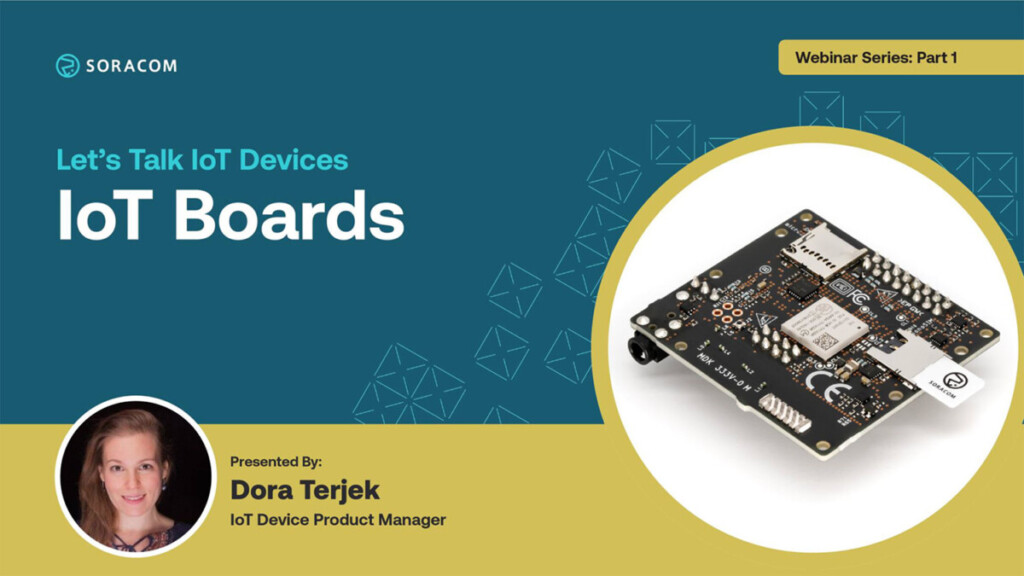Understanding The IoT Development Board

A development board is a circuit board that includes a specific microprocessor, the stripped-down hardware components required to support its use, and little else. Though there’s rarely a user interface, these IoT devices are designed to provide engineers the means to quickly prototype and test software for a particular IoT solution.
Along with the microprocessor, these boards typically include a power supply, an interface that allows components on the board to be programmed, and some basic input and output devices, like buttons and LEDs. Engineers can usually connect a device – a computer, a USB flash drive, or another input object carrying minimal software – that can run code.
Development boards provide two specific benefits to engineers prototyping an IoT device:
- They allow them to work with a standard set of circuits and power supplies that would otherwise have to be reassembled for every project; and
- They are stripped down and simple enough that they provide a quick, affordable way to test software and IoT device functionality.
Of course, it’s possible to buy the components that make up a development board individually and assemble them yourself on a breadboard, but these tools allow you to skip that step and move right to testing code. Boards used for IoT development typically connect to the internet, which allows developers to explore how devices on a network can talk to each other and transmit data where it needs to go.
IoT development boards could be used to test an automation of some kind – a system to water crops on a schedule, for example, or to turn an industrial facility’s HVAC system on and off at specific times. Development boards can also be helpful when an IoT engineer needs to ensure functionality in a more extreme environment – i.e. when heat or cold, or humidity is potentially hazardous.
The boards provide a cheaper way to evaluate risks to equipment and whether all systems will function appropriately in real-world conditions before deploying a full complement of devices. To that end, selecting the type of board that allows the right testing processes and yields the most accurate results is essential.

Selecting The Right Development Board for You
Different manufacturers’ boards offer different features that may be helpful in testing your project. Most fall within one of the three primary types of development boards commonly used in IoT prototyping:
- Microcontroller boards are the simplest type. They are generally driven by an external operating system and are designed to run a single function or process.
- Single board computers are ready to go out of the box. They already have an operating system built in and can run multiple tasks simultaneously.
- Field-programmable gate array boards use processors that are designed, as their name suggests, to be configured once they’re part of the end-user’s system. They have a variety of possible configurations, which allows experimentation around ways of setting up the architecture of the IoT network that’s in the design and testing process.
Choosing the right board requires thinking through the functionality of the particular devices and how that could impact your IoT project. Will the device need to perform complex tasks, or will it really be required to accomplish a single process or action?
Speed is another factor – how quickly will processes need to be completed to effectively accomplish the project’s goal? The right development board can not only accelerate the work to engineer devices, it can even help pressure test specific kinds of connectivity.
Of course, budget is something to consider. Boards that don’t include a full OS will be able to accomplish less complicated tasks, but can be acquired more cheaply, which drives down the cost of prototyping and testing.

The Difference Between Development Boards and Evaluation Boards
When considering the various types of boards that could work best in your project, there is one other factor to keep in mind: should you use a development board or an evaluation board? These terms can sometimes be used interchangeably, which can be confusing because they operate differently. Nonetheless, both be useful tools when developing IoT devices and applications.
Evaluation boards allow engineers to look at specific hardware components and see how they interact with other elements used in an IoT application. On the other hand, development boards are more useful for developing the specific applications that drive prototypes. The two can work together, but evaluation boards are intended more for hardware experimentation, while development boards really support the capabilities of a device through the lens of the applications driving it.
In other words, the evaluation board is where IoT engineers can play with the individual parts of an IoT device prototype, making rapid changes that can decrease the time to market for specific solutions. The development board, however, is where engineers can test the software that drives the device itself.
For those newer to IoT projects, development boards can be a great way to build skills, experiment in a lower-risk environment, and understand how the various components of IoT devices and their associated applications work together. But even for experienced engineers, development boards play a key role in successful IoT projects. They are a key tool for quickly taking an IoT project from concept to realization.
***

Interested in learning more about development boards and how they can help to shape your IoT project? Check out Let’s Talk IoT Devices: IoT Boards, the first in a series of webinars where Dora Terjek, Soracom’s IoT Device Product Manager, discusses the ins and outs of different hardware device types. Catch the original recording on-demand today.





